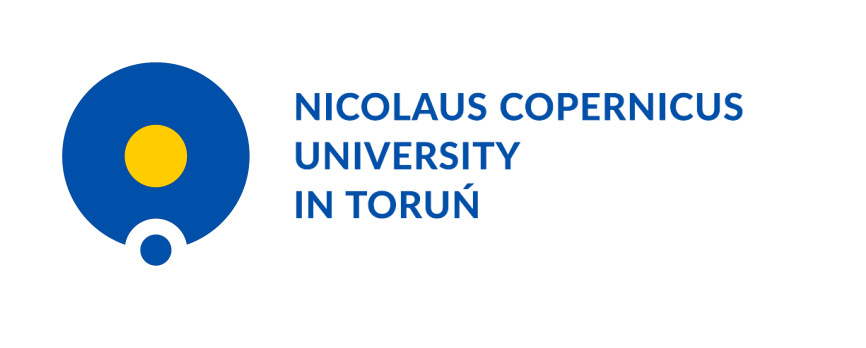Conservation and Restoration of the Cultural Heritage
Conservation and restoration of cultural heritage including the areas of art and anthropology. Team leader: prof. dr hab. Elżbieta Basiul
The research conducted by the EF team, “Conservation and restoration of cultural heritage”, will be implemented in a comprehensive and interdisciplinary mode. Combining research methodologies from different disciplines enables to see a broader range of research issues and possible solutions as well as to recognize the value of the examined object due to all aspects of involvement in its creation and functioning: construction technology and types of construction, design, artistry, history of transformation and use, degree and causes of damage. The research will also facilitate the development of more innovative materials and methods for conservation and preservation purposes. Such research has been recommended for several years by the International Council on Monuments and Sites ICOMOS CHARTER – Principles for the Analysis, Conservation and Structural Restoration of Architectural Heritage. The research is standard in Western Europe, whereas in Poland it is still occasional.
The team will also research the composition, properties, and strength of new materials developed for the conservation of monuments and the needs of other branches of economy. The prospects for the scientific development of the team are part of the research activities carried out by the Centre for Research and Conservation of Cultural Heritage which is currently under construction. Additionally, the NCU is the leader of the Polish Consortium for Heritage Science (E-RIHS), and Professor T. Targowski is the Chair of its Scientific Council. After the transformation of the Polish Consortium into a Research Infrastructure, the next step will be to join E-RIHS ERIC: European Research Infrastructure for Heritage Science.
Collaboration under E-RIHS ERIC and cooperation with existing and future, especially Asian, partners of the Faculty of Fine Arts, Nicolaus Copernicus University in research and conservation will provide the team with the possibility to research the most important and best world heritage works, including those on the UNESCO World Heritage List. Scientific as well as commercial cooperation will continue with foreign centres, such as Musée du Louvre, La direction générale des patrimoines of the French Ministry of Culture, the International Molinological Society, University of Amsterdam, Gesellschaft zur Erhaltung des kulturellen Erbes e.V., Technische Hochschule Köln, Ministry of Culture and Fine Arts (Cambodia), National Gallery in Singapore, National Museum in Beijing and others.
Prof. dr hab. Elżbieta Basiul – pursued university studies between 1979 – 1984 in the field of conservation and restoration of works of art, Faculty of Fine Arts, Nicolaus Copernicus University in Toruń. Since 1984, she has been a research and teaching staff member in the Department of Painting Technologies and Techniques, Nicolaus Copernicus University in Toruń. She was awarded a degree of doctor in the field of art in 1997 from the Faculty of Fine Arts, Nicolaus Copernicus University in Toruń for the thesis entitled “The problem of colours in retouching easel paintings painted in multilayer technique” (supervisor: prof. dr art. kons. Józef Flik). She was awarded a degree of doctor habilitated in painting and conservation of works of art in 2005 for her conservation achievements and the thesis entitled “Painting workshop of the Gothic triptych with St. Mary of the Apocalypse from the cathedral basilica in Włocławek“. She has been Director of the Institute of Art Conservation Science, Nicolaus Copernicus University in Toruń since 1 January 2007. She was awarded the position of professor at the Nicolaus Copernicus University In 2009 and has been Dean of the Faculty of Fine Arts, Nicolaus Copernicus University since 2012 (second term). She was awarded the title of a full professor in 2016. She is an expert in conservation and restoration of works of art, a participant in national and international research programmes; a member of ZPAP (the Association of Polish Artists and Designers),anexpert in the field of conservation of painting and polychrome sculpture, the author of many publications and prestigious conservation projects. She has been involved in the creation and implementation of the concept of the Centre for the Study and Conservation of Cultural Heritage. She has been a member of numerous associations and expert bodies, including being an expert of the Polish Accreditation Committee since 2007, a member of the Association of Polish Artists and Designers of the Toruń District – Chair of the Section of Art Conservators from 2006 to 2011.
Participation in major EU-funded projects:
- Participation in the project entitled “Implementation of cluster development strategy tasks GRUPA MEBLOWA HORECA” implemented under the Regional Operational Programme of the Kujawsko-Pomorskie Voivodeship for the years 2007-2013, Action 5.1 Development of business environment institutions – 2014.
- Multi-module interdisciplinary non-destructive research of architectural objects on the example of Gothic merchant houses in Toruń (three merchant houses, Mostowa 6 St.). Project No. RPKP.05.04.00-04-005/13, implemented under Action 5. Strengthening the regional potential of research and technology development under Priority Axis 5.4 Strengthening the competitiveness of enterprises, Regional Operational Programme of Kujawsko-Pomorskie Voivodeship for 2007-2013, implementation in the years 2014- 2015.
- Monumentum Sonus Visio. Academic Centres of Creative Industries of Culture, Art and Monuments Conservation. The project is implemented as part of the consortium concluded between the Nicolaus Copernicus University in Toruń and WSG University in Bydgoszcz. Project leader – Nicolaus Copernicus University in Toruń, Faculty of Fine Arts, personally Prof. Elżbieta Basiul as Dean of Faculty of Fine Arts NCU. Project coordinator – dr Katarzyna Krynicka-Szroeder. The project has been implemented since 2018. Priority axis: 1. Strengthening innovation and competitiveness of the region’s economy. Action: 1.1 Public infrastructure for research and innovation of the Regional Operational Programme of Kujawsko-Pomorskie Voivodeship for 2014-2020. The project will result in the establishment of the Centre for Research and Conservation of Cultural Heritage at the Faculty of Fine Arts, Nicolaus Copernicus University in Toruń, which will be located in Toruń at Sienkiewicza 30/32.
- Technical consultations during the conservation work of the frame ceiling The Fire of the Trinity Lavra (the works of Tomasz Dolabella, 17th century) in the Second Senatorial Room of the Former Cracow Bishops’ Palace in Kielce as part of the project “The Palace in the Museum, Museum in the Palace project. Protection, preservation and public access to movable and immovable monuments of national importance” being implemented since 2019 under the Operational Programme Infrastructure and Environment 2014-2020.
International conservation and expert work:
- Determining the authenticity of five paintings in the collection of the National Gallery in Singapore commissioned as a result of winning by the Faculty of Fine Arts, Nicolaus Copernicus University in Toruń of an international competition announced by the Heritage Conservation Centre in Singapore; participation in a joint team project under the leadership of dr hab. Jarosław Rogóż (Toruń 2014);
- Technological and conservation expertise of the painting “The scene of the martyrdom of the people of Cambodia during Pol Pot’s rule” by Vann Nath, 20.05.1988; Tuol Sleng Genocide Museum in Phnom Penh, Cambodia; Toruń 2014 (joint team project under the leadership of prof. dr hab. Elżbiety Basiul);
- Research and conservation and restoration of paintings by Juliusz, Wojciech and Jerzy Kossak from the Polish Museum in Rapperswil (Switzerland). The project was implemented under the programme of the Minister of Culture and National Heritage 2018: Protection of cultural heritage abroad, No-05415/18 entitled “Exhibition of paintings by Juliusz and Wojciech Kossak with the catalogue in the Polish Museum in Rapperswil and other places.” The project was implemented by the District Museum in Suwałki (joint team project under the leadership of prof. dr hab. Elżbiety Basiul).


 ul. Gagarina 7, 87-100 Toruń
ul. Gagarina 7, 87-100 Toruń